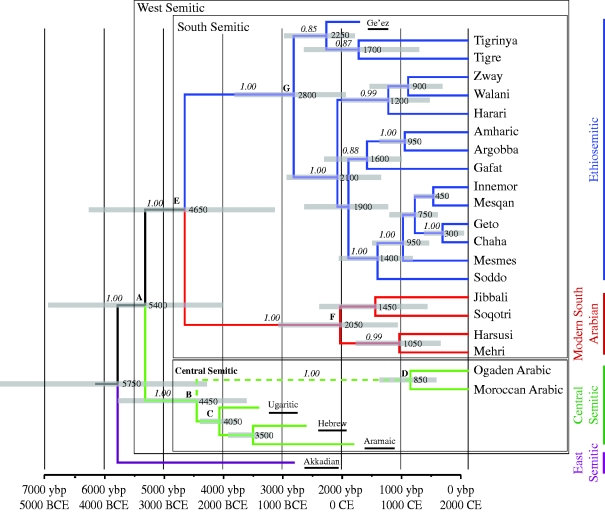Figure 2.
Phylogeny of Semitic languages. Our phylogeny of 25 Semitic languages based on binary encoded data is presented with mean divergence times to the right of each node and 95% HPD intervals indicated by light grey bars. The scale bar along the bottom of the phylogeny presents time in YBP. Posterior probabilities of branches are printed in italics above each branch with >0.75 support. Extinct languages are underlined and all other languages are considered to evolve to the present. Subgroups of Semitic are identified by colour bars to the right of the phylogeny (purple bars, East Semitic; green bars, Central Semitic; red bars, MSA; and blue bars, Ethiosemitic) and by three boxes (West, Central and South Semitic). Important nodes are indicated by letters: A, West Semitic; B, Central Semitic; C, Ugaritic–Hebrew–Aramaic; D, Arabic; E, South Semitic; F, MSA; and G, Ethiosemitic. The dashed line leading to Arabic reflects the fact that log BF tests were equivocal in the placement of Arabic, so we placed Arabic in Central Semitic based on previous linguistic studies (e.g. Hetzron 1976; Faber 1997). The topology is rooted with Akkadian, which is preferred by our log BF analyses, and follows the constraints of the standard model.

